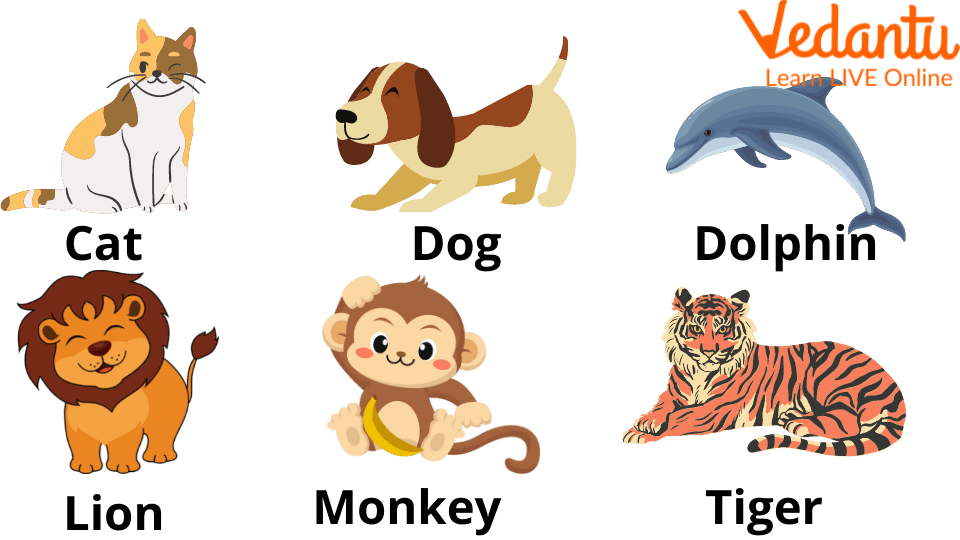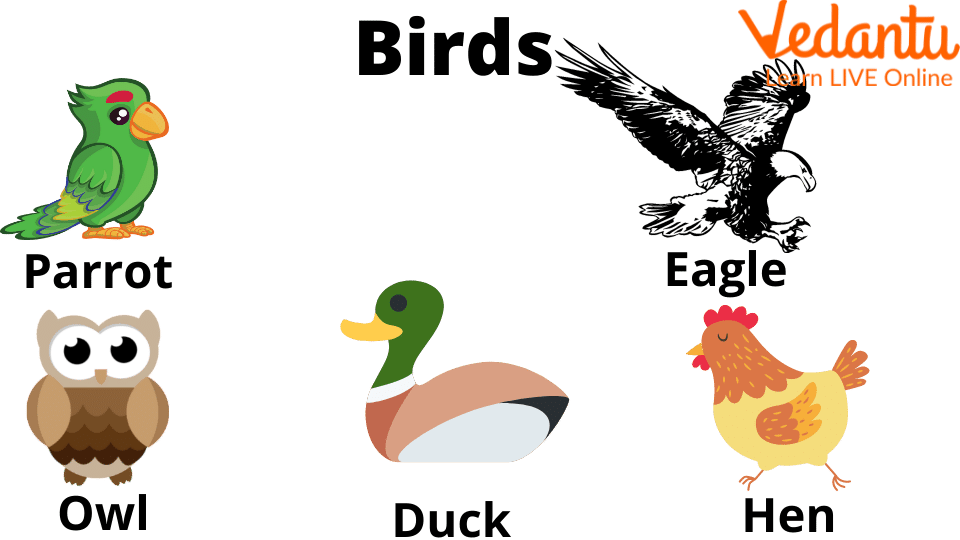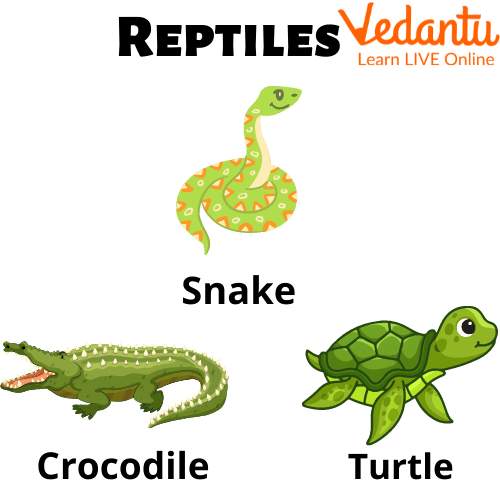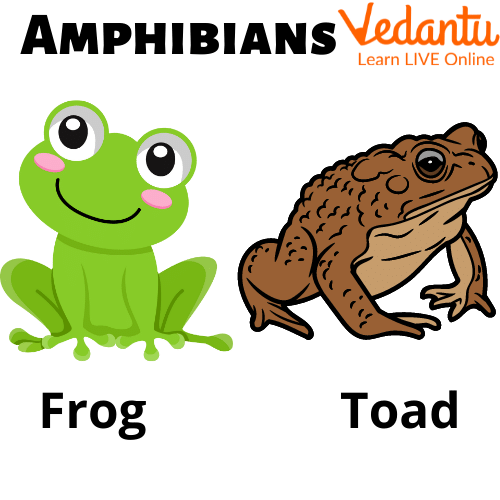




Let’s Learn More about Vertebrate Animals
The vertebrates include over 45,000 living species. Vertebrates range in size from tiny fish to elephants and whales (weighing up to 100 tonnes), the largest animals ever known. Vertebrates have evolved to live beneath, on the surface, and in the air. They eat plants, invertebrates, and sometimes each other. Some common vertebrate animal names are Whale, Lion, Bat, Owl, Elephant, Frog, etc.
What are Vertebrates?
Vertebrates are a chordate group that comprises birds, mammals, fishes, lampreys, amphibians, and reptiles. Vertebrates have a vertebral column, which replaces the notochord with numerous vertebrae that create a backbone. The vertebrae encircle and protect the nerve cord while also providing structural support to the animal.
Vertebrates have an advanced head, a distinct brain encased by a skull, and paired sense organs. They also feature a highly efficient respiratory system, a muscular throat with slits and gills (the slits and gills are considerably modified in terrestrial vertebrates), a muscularized gut, and a chambered heart.
Classification of Vertebrates
On the basis of anatomical and physiological characteristics, they are classified into 7 classes:
Mammalia (mammals)
Aves (birds)
Reptilia (reptiles)
Amphibia (amphibians)
Agnatha (jawless fish)
Osteichthyes (bony fish)
Chondrichthyes (cartilaginous fish)
Mammalia
Mammals, which include humans, are warm-blooded creatures. They have hair and backbones. Female mammals, unlike other animal types, produce milk to nourish their young. Almost all animals give birth to living offspring (except platypus and echidna, which lay eggs). Bats are flying mammals.

Mammals
Aves
Birds are vertebrates with feathers that have been adapted for flight and active metabolism. They also lay amniote eggs. The Aves class consists of warm-blooded animals with high body temperatures.

Birds
Reptilia
Reptiles are four-footed tetrapods with a single external nasal entrance, a cloaca, and a tail. They lay eggs as well. Internal fertilization, amniotic development, and epidermal scales covering part or all of the body are all features of reptiles.

Reptiles
Amphibia
Amphibians are small vertebrates that live in humid environments and require water to exist. This class of vertebrates includes frogs, toads, salamanders, and newts. They have extremely thin skin through which they can all breathe and absorb water. Amphibians also have unique skin glands that make protein.

Amphibians
Agnatha
Jawless fish are primitive species that hunt for food or exist as parasites. Although they lack an upper and lower-hinged jaw, they can only suck or rasp with their circular mouth. Agnatha fish have bad eyesight but highly developed senses of touch and smell. They can be easily found in both freshwater and saltwater.
Osteichthyes
The biggest vertebrate class, the cold-blooded Osteichthyes or bony fish, have non-cartilaginous bones. To enhance balance, bony fish have an upper and lower jaw, several mucus glands on the skin, fins, five pairs of gills, and, in some species, a swim bladder. These fish, which can survive in both saltwater and freshwater, are normally taller than they are wide. They can lay an enormous number of eggs.
Chondrichthyes
The cartilaginous fishes have upper and lower jaws, scales, and paired fins, but their skeletons are formed of cartilage. Blood cells cannot be formed in the bone marrow in the absence of bone. Chondrichthyes fish are usually wider than they are tall. They do not have separate scales, but rather dermal denticles that give them their distinctive sandpaper skin. Gills range from five to seven in number, and for some species, constant movement is required to maintain water (and thus oxygen) passage.
Characteristics of Vertebrates
Some of the common characteristic features of Vertebrates are as follows
They have a vertebral column.
They have chambered hearts.
They have a fully developed skeleton.
They can breathe through the lungs or gills.
They have well-developed brains, eyes, and mouths.
Summary
As we have discussed earlier, The bony vertebral column is referred to as a vertebrate. Brains, internal skeletons to which muscles can attach, two eyes, closed circulatory systems, and muscular mouths have all developed in all vertebrate classes. On the basis of anatomical and physiological characteristics, they are classified into 7 classes: Mammalia (mammals), Aves (birds), Reptilia (reptiles), Amphibia (amphibians), Agnatha (jawless fish), Osteichthyes (bony fish), and Chondrichthyes (cartilaginous fish). We also discussed some vertebrate animal names.
FAQs on Names of Vertebrates: A List of Animals with Backbones
1. What are the differences between Vertebrates and Invertebrates?
Vertebrates are a category of animals, which includes mammals, birds and reptiles. All vertebrates have a central nervous system with connected sense organs including eyes, ears, and nose. Invertebrates do not have this unique feature as they use their nerve cells for traveling rather than for sending information. They also lack sense organs like those on the head (ears), which include noses and eyes in other animals.
2. Is there a nervous system in invertebrates?
Any animal's nervous system aids it in recognizing external stimuli inflicted on it from its surroundings. This system has been reacting to its surroundings appropriately. Neuronal cells build the nervous system, which is linked to the brain via the body's spinal cord. Because the spinal cord is located within the vertebral column, it is possible that invertebrates lack a nervous system. However, it is worth noting that invertebrates have a nervous system as well. The medicinal leech was the first invertebrate discovered to have a nervous system.
3. What do you understand by taxonomy in Biology?
Despite the fact that life on Earth is diverse, certain creatures or groups of organisms share similar traits. Biologists and geologists study this commonality in traits to determine their origin and evolution. They have called this under various domains, kingdoms, phylum, class, order, family, genus, and species to make it easier to remember these advancements and identify animals on this basis.
4. What are the Characteristics Features of Invertebrates?
Some of the characteristic features of Invertebrates include:
Most don't have blood, blood cells, or haemoglobin.
Many are microscopic and live in water.
Most invertebrates live on land or are aquatic creatures.
Invertebrate species range from a single cell to more than 100 feet long.
5. What is the difference between Chondrichthyes and Osteichthyes?
Fish are called Chondrichthyes, while many other vertebrate animals (including humans) are Osteichthyes. The major difference between the two is that Chondrichthyes have cartilaginous skeletons and the other has a bone. The jawless fish like lampreys, hagfish, and sharks have a cartilaginous skeleton and humans have bones.









